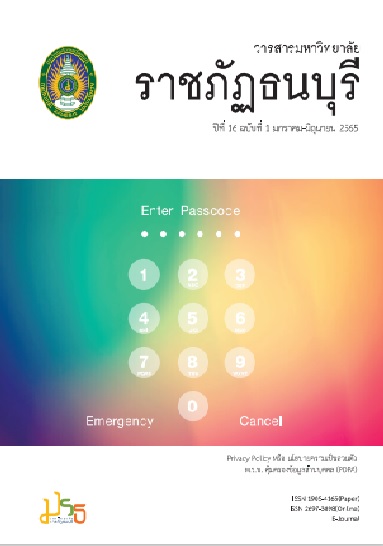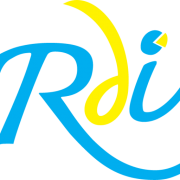การศึกษาการแก้ไขปัญหากำลังผลิตล้นเกินของสาธารณรัฐประชาชนจีนด้วยข้อริเริ่มหนึ่งแถบหนึ่งเส้นทางกรณีอุตสาหกรรมเหล็ก
คำสำคัญ:
ปัญหากำลังผลิตล้นเกิน, หนึ่งแถบหนึ่งเส้นทาง, อุตสาหกรรมเหล็กบทคัดย่อ
การวิจัยนี้มีวัตถุประสงค์เพื่อ (1) เพื่อวิเคราะห์ที่มาของปัญหากำลังผลิตล้นเกินของอุตสาหกรรมเหล็กของสาธารณรัฐประชาชนจีน (2) เพื่อศึกษาแนวทางการแก้ไขปัญหาอุตสาหกรรมเหล็กภายใต้ข้อริเริ่มหนึ่งแถบหนึ่งเส้นทาง (3) เพื่อศึกษาแนวโน้มการเคลื่อนไหวของอุตสาหกรรมเหล็กของสาธารณรัฐประชาชนจีนภายใต้ข้อริเริ่มหนึ่งแถบหนึ่งเส้นทางในประเทศไทย โดยแนวทางการวิจัยเชิงคุณภาพ ซึ่งมีแนวทางในการศึกษาและเก็บรวบรวมข้อมูลที่ให้ความสำคัญกับข้อมูลเชิงลึกเพื่อสร้างองค์ความรู้และความเข้าใจ และมีการนำเสนอข้อมูลเชิงปริมาณเพื่อประกอบการนำเสนอผลการศึกษาให้ครอบคลุมในหลากหลายมิติที่เกี่ยวข้อง ผลการวิจัยพบว่า (1) การขยายตัวของภาคอุตสาหกรรมตามแผนพัฒนาเศรษฐกิจและสังคมของประเทศจีน ตลอดจนการแผ่ขยายของสังคมเมืองไปยังพื้นที่ต่าง ๆ เป็นปัจจัยขับเคลื่อนสำคัญที่ทำให้เกิดสภาวะเกิดสภาวะอุปทานมากกว่าอุปสงค์ของอุตสาหกรรมเหล็กในสาธารณรัฐประชาชนจีน (2) ความเชื่อมโยงระหว่างข้อริเริ่มหนึ่งแถบหนึ่งเส้นทางกับการแก้ไขปัญหากำลังผลิตล้นเกินอุตสาหกรรมเหล็กของสาธารณรัฐประชาชนจีนที่ชัดเจน และปรากฎการเคลื่อนไหวที่ชัดเจนของอุตสาหกรรมเหล็กภายใต้ข้อริเริ่มหนึ่งแถบหนึ่งเส้นทางที่ผลักดันโดยรัฐบาลในตลาดต่างประเทศ อาทิ การบริโภคเหล็กที่เพิ่มขึ้นของกลุ่มประเทศตามแถบเส้นทางมีปริมาณมาก จากการพัฒนาการขนส่งและโครงสร้างพื้นฐาน (3) ประเทศจีนจะขยายห่วงโซ่คุณค่าของอุตสาหกรรมเหล็กไปยังกลุ่มประเทศตามแถบเส้นทาง หรือแม้แต่ประเทศไทย ทั้งนี้ ข้อริเริ่มหนึ่งแถบหนึ่งเส้นทางอาจส่งผลกระทบต่ออุตสาหกรรมเหล็กของประเทศไทยเป็นอย่างมาก เนื่องจากโอกาสต่าง ๆ ที่เกิดขึ้นจากการสนับสนุนของรัฐบาลจีนภายใต้ข้อริเริ่มหนึ่งแถบหนึ่งเส้นทาง
Downloads
เอกสารอ้างอิง
เกรียงศักดิ์ เจริญวงศ์ศักดิ์. (2561). เส้นทางสายไหมใหม่กับเศรษฐกิจโลก. ค้นเมื่อ 13 กันยายน 2564, จาก https://www.bangkokbiznews.com/blog/detail/645789.
รติมา คชนันทน์. (2561). การวิเคราะห์ “เส้นทางสายไหม” ในศตวรรษที่ 21 กับโอกาสของไทยกรุงเทพมหานคร: สำนักวิชาการสำนักงานเลขาธิการสภาผู้แทนราษฎร.
สมบัติ ธำรงธัญวงศ์, จุฬาภรณ์ ขอบใจกลาง, และหลี่ เหรินเหลียง. (2559). ความสัมพันธ์เศรษฐกิจไทย-จีน ภายใต้การเปลี่ยนแปลงของเศรษฐกิจโลก. วารสารพัฒนาสังค., 18(2), น.127-154.
Balhuizen, A. (2017). China’s BRI, episode two: a vision encased in steel. Melbourne: BHP.
Bao, X. (2014, December 09). “The belt and road” strategy will benefit related 65 countries and the plan will release soon. Retrieved September 13 2021, from http://News.hexun.com/2014-12-09/171223823.html
Bērziņa, Č. (2016, July 28). BRI Instead of OBOR – China Edits the English Name of its Most Ambitious International Project. Retrieved September 18 2021, from http://liia.lv/en/analysis/briinstead-of-obor-china-edits-the-english-name-of-its-most-ambitious-internationalproject-532.
Energy Transitions Commission (ETC). (2019, November). CHINA 2050: A FULLY DEVELOPED RICH ZERO CARBON ECONOMY. [Online]. Retrieved September 18 2021, from https://www.energy-transitions.org/publications/china -2050-a-fully-developed-rich-zero-carbon-economy.
Feng, M. & Wang, Z. (2012). The analysis of Chinese steel industry production efficiency based on the listed companies. Chinese Journal of Management. 2012(3), pp. 371–375. (In Chinese)
Gary, T. (2013). How to Do Your Research Project: A Guide for Students in Education and Applied Social Sciences. Newbury Park, California: SAGE Publications.
Gilbert, N. (2008). Researching Social Life. United Kingdom: The Centre for Research in Social Simulation.
Han, G. G. (2013). The development situation and countermeasures of China’s current overcapacity. Science & Technology for Development. 2013(6), pp. 79-84.
Hu, R. T. (2016). Analysis of the Causes of Overcapacity and Supply-side Factors of Resolving. Modern Economic Research. 2016(2), pp. 5-9.
Huang, S. (2015, October 13). The import and export of China and the “the belt and road” related countries are about 4.5 trillion RMB in the first three quarters of 2015. Retrieved August 7 2021, from http://economy.gmw.cn/2015-10/13/content_17329594.htm.
Huang, Z. P. (2017, October 18). Summary of Xi Jinping’s three-hour Communist Party congress speech. Retrieved August 7 2021, from https://qz.com/1105337/chinas-19th-party-congress-your-five-minute-summary-of xi-jinpings-three-hour-speech.
Kim, C. D. (2017). Chinese Steel Moves along the One Belt, One Road. Asian Steel Watch. 2017(3), pp. 78-87.
Li, X. S., Zhao, C. Y. & Nie, J. (2017). Foreign investment and heterogeneous capacity utilization of enterprises. The Journal of World Economy. 40(5), pp. 73-97.
Lin, C. & Bai, L. (2010). The long-run demand of the Chinese steel: impacts and policy choices. Economy and Management Journal. 2010(1), pp. 35-40.
Liu, H. M. & Song, L. G. (2012). Steel industry development and transformation in China: an overview. In Liu and Song (Ed.), The Chinese Steel Industry’s Transformation Structural Change, Performance and Demand on Resources (pp. 1-16). Northampton: Edward Elgar Publishing.
Lu, B. L. & Lu, R. (2016). Five Views about Current Overcapacity in China. Finance and Economics. 2016(10), pp. 57-67.
National Development and Reform Commission, Ministry of Foreign Affairs & Ministry of Commerce of the People’s Republic of China. (2015, March). Vision and Actions on Jointly Building Silk Road Economic Belt and 21st Century Maritime Silk Road. Retrieved August 7 2021, from http://english.www.gov.cn.
Steel Industry Coalition. (2016, June 30). ‘Report on Market Research into the Peoples Republic of China Steel Industry Part 1’. Retrieved September 18 2021, from https://www.steel.org/wp-content/uploads/ 2020/11/Steel-Industry-Coaliton-Full-Final-Report-06302016.pdf.
World Steel Association. (2021). January 2021 crude steel production. [Online]. Retrieved October 30, 2021, from https://worldsteel.org/media-centre/press-releases/2021/january-2021-crude-steel-production/
World Steel Association. (2021). World Steel in Figures 2021 now available. Retrieved October 30, 2021, from: https://worldsteel.org/media-centre/press-releases/2021/world-steel-in-figures-2021-now-available/
Xu, Z. R. & Song, X. N. (2016). Supply-side structural reforms force companies to “go global” to resolve excess capacity. Overseas Investment & Export Credits. 2016(2), pp. 5-8.
Yu, C. J. (2021). Has China’s foreign contracted projects promoted the export of steel products? Based on the study of the mediating effect of infrastructure quality in countries along the “Belt and Road”. Journal of Hubei University (Philosophy and Social Science). 48(2), pp. 144-153.
Yu, L. & Zhang, J. (2014). The fundamental cause and outlet of China’s overcapacity: non-market factors and its three-step strategy. Reform. 2014(2), pp. 40-51.
Zhang, L. (2013, March 26). Analysis: From ‘Cat Theory’ to ‘Shoes Theory’. Retrieved August 7 2021, from https://www.bbc.com/zhongwen/simp/china/2013/03/130326 _ana_dengxiaoping_xijinping_theory
ดาวน์โหลด
เผยแพร่แล้ว
รูปแบบการอ้างอิง
ฉบับ
ประเภทบทความ
สัญญาอนุญาต

อนุญาตภายใต้เงื่อนไข Creative Commons Attribution-NonCommercial-NoDerivatives 4.0 International License.
บทความที่ได้รับการตีพิมพ์เป็นลิขสิทธิ์ของมหาวิทยาลัยราชภัฏธนบุรี
ข้อความที่ปรากฏในบทความแต่ละเรื่องในวารสารวิชาการเล่มนี้เป็นความคิดเห็นส่วนตัวของผู้เขียนแต่ละท่านไม่เกี่ยวข้องกับมหาวิทยาลัยราชภัฏธนบุรีและบุคลากรท่านอื่น ๆ ในมหาวิทยาลัยฯ แต่อย่างใด ความรับผิดชอบองค์ประกอบทั้งหมดของบทความแต่ละเรื่องเป็นของผู้เขียนแต่ละท่าน หากมีความผิดพลาดใด ๆ ผู้เขียนแต่ละท่านจะรับผิดชอบบทความของตนเองแต่ผู้เดียว







